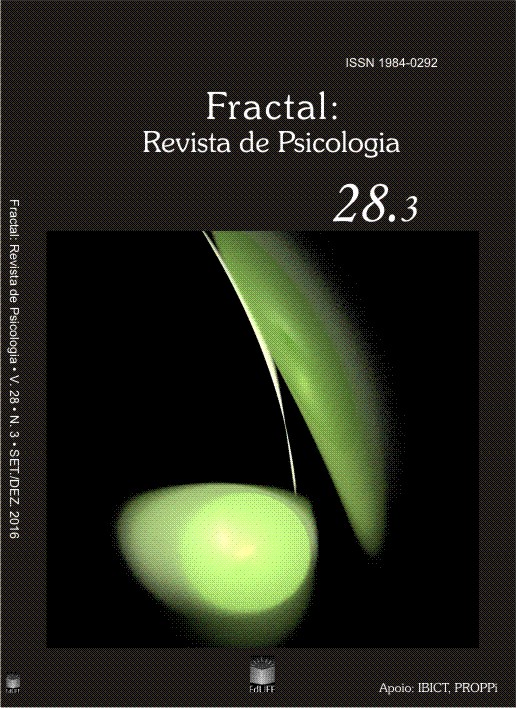The kite as a fé(i)tiche: bypassing of dichotomies
Keywords:
fe(i)tiche, toy, kiteAbstract
We operate with the concept of fé(i)tiche proposed by Latour to understand the power of influence and agglutination of an ancient toy in its relationship with humans that have it as an object of high significance in their biographies. In this article, the word fetish was problematized to assume a composite version which translates, at the same time, a fact and a sorcery, object made and enchanted object, bypassing the dichotomies between what is reality and what is fabrication. In the quest to restore the integration of wholes that were split by modern thought, is chosen to study phenomena as an effect of chains whose mediators are investigated with the same value as operators of effects. Narratives of kite players collected in interviews have been privileged, as well as contributions in the literature, by highlighting the power of the kite as a sacred object that is protagonist of events and mobilizes feelings and actions.Downloads
References
ALVES, M. D. G. Amigos para sempre. Belo Horizonte: Ed. Lê, 1992.
ALVES, R. A pipa e a flor. São Paulo: Loyola, 1986.
ARIÈS, P. A história social da criança e da família. Rio de Janeiro: Guanabara Koogan, 1981.
AUGÉ, M. O fetiche e seu objeto: abordagem etnológica. In: AUGÉ, M. et al. (Org.) O objeto em psicanálise: o fetiche, o corpo, a criança, a ciência. Campinas: Papirus, 1989. p. 42-60.
BENJAMIN, W. Reflexões: a criança, o brinquedo, a educação. São Paulo: Summus, 1984.
BROUGÈRE, G. Brinquedo e cultura. São Paulo: Cortez, 2000.
DIAFÉRIA, L. O empinador de estrela. São Paulo: Moderna, 1984.
ELIADE, M. Mitos, sonhos e mistérios. Lisboa: Ed. 70. 1957.
ELIADE, M. Mefistófeles e o andrógino. São Paulo: Martins Fontes, 1991.
EQUIPE SILVIO VOCE. Empresa de promoções e eventos, que realiza atividades variadas em todo o Brasil, e ficou muito conhecida por suas atividades com PIPAS e PAPAGAIOS. Disponível em: http://www.pipas.com.br/. Acesso em: 12 jun. 2013.
FATO. In: FERREIRA, A.B. H. Novo Dicionário Aurélio da Língua Portuguesa. Rio de Janeiro: Nova Fronteira, 1986. p. 614.
FEITIÇO. In: FERREIRA, A.B. H. Novo Dicionário Aurélio da Língua Portuguesa. Rio de Janeiro: Nova Fronteira, 1986. p. 619.
FETICHE. In: FERREIRA, A.B. H. Novo Dicionário Aurélio da Língua Portuguesa. Rio de Janeiro: Nova Fronteira, 1986. p. 623.
KEN YAMAZATO (Site). Engenheiro mecânico, é apaixonado por pipas/papagaios desde criança, e por toda a vida tem se dedicado ao estudo e à arte de projetar e criar modelos das mais variadas cores, tamanhos e formatos. Disponível em: http://www.kenyamazato.com.br/. Acesso em: 22 jun. 2013.
KENT, S. The creative book of kites. New York: Smithmark Books, 1997.
LATOUR, B. As visões do Espírito: uma introdução a antropologia das ciências e das técnicas. Culture Technique, n. 14 p. 5-29, 1985. Traduzido para Publicações didáticas, mar. 1990, por J. M. Carvalho de Mello e C. J. Saldanha Machado.
LATOUR, B. A esperança de Pandora. Bauru, SP: EDUSC, 2001.
LATOUR, B. Reflexão sobre o culto moderno dos deuses fé(i)tiches. Bauru, SP: EDUSC, 2002a.
LATOUR, B. Another take on the science and religion debate. 2002b. Disponível em: http://www.bruno-latour.fr/node/167. Acesso em: 23 maio 2013.
MARX, K. O Capital. São Paulo: Abril Cultural, 1983.
MELLO, T. Arte e ciência de empinar papagaio. Rio de Janeiro: Civilização Brasileira, 1983.
PIPA. In: DICIONÁRIO da Enciclopédia Mirador. Antônio Houaiss, ed. São Paulo: Encyclopaedia Britannica do Brasil, 1979. p. 1272.
PORTAL das pipas. (Site). Disponível em: http://www.portaldaspipas.com.br/>. Acesso em: 21 jun. 2013.
RIOS, J. A. Pipas, papagaios e pandorgas. Carta Mensal, Rio de Janeiro, v. 49, n. 582, p. 3-27, 2003.
SEBEOK, T. A. Fetiche. Face, S. Paulo, vol. 1, n. 2, p. 11-25, 1988.
SERRES, M. Filosofia mestiça. Rio de Janeiro: Nova Fronteira, 1993.
VOCE, S. Brincando com pipas múltiplas e de duplo comando. São Paulo: Global, 2002.
Downloads
Published
How to Cite
Issue
Section
License
Authors publishing in this journal agree to the following terms:
- Authors retain copyright and grant the journal the right of first publication, with the work simultaneously licensed under the Creative Commons Attribution License allowing sharing of the work with acknowledgement of authorship of the work and initial publication in this journal.
- Authors are permitted to enter into additional contracts separately for non-exclusive distribution of the version of the work published in this journal (e.g., publishing in an institutional repository or as a book chapter), with acknowledgment of authorship and initial publication in this journal.

This work is licensed under a Creative Commons Attribution 4.0 International License.
To the extent possible under the law, Fractal: Journal of Psychology has waived all copyright and related rights to the Reference Lists in research articles. This work is published in: Brazil.
To the extent possible under law,Fractal: Journal of Psychology has waived all copyright and related or neighboring rights to Reference lists in research articles. This work is published from: Brazil.







